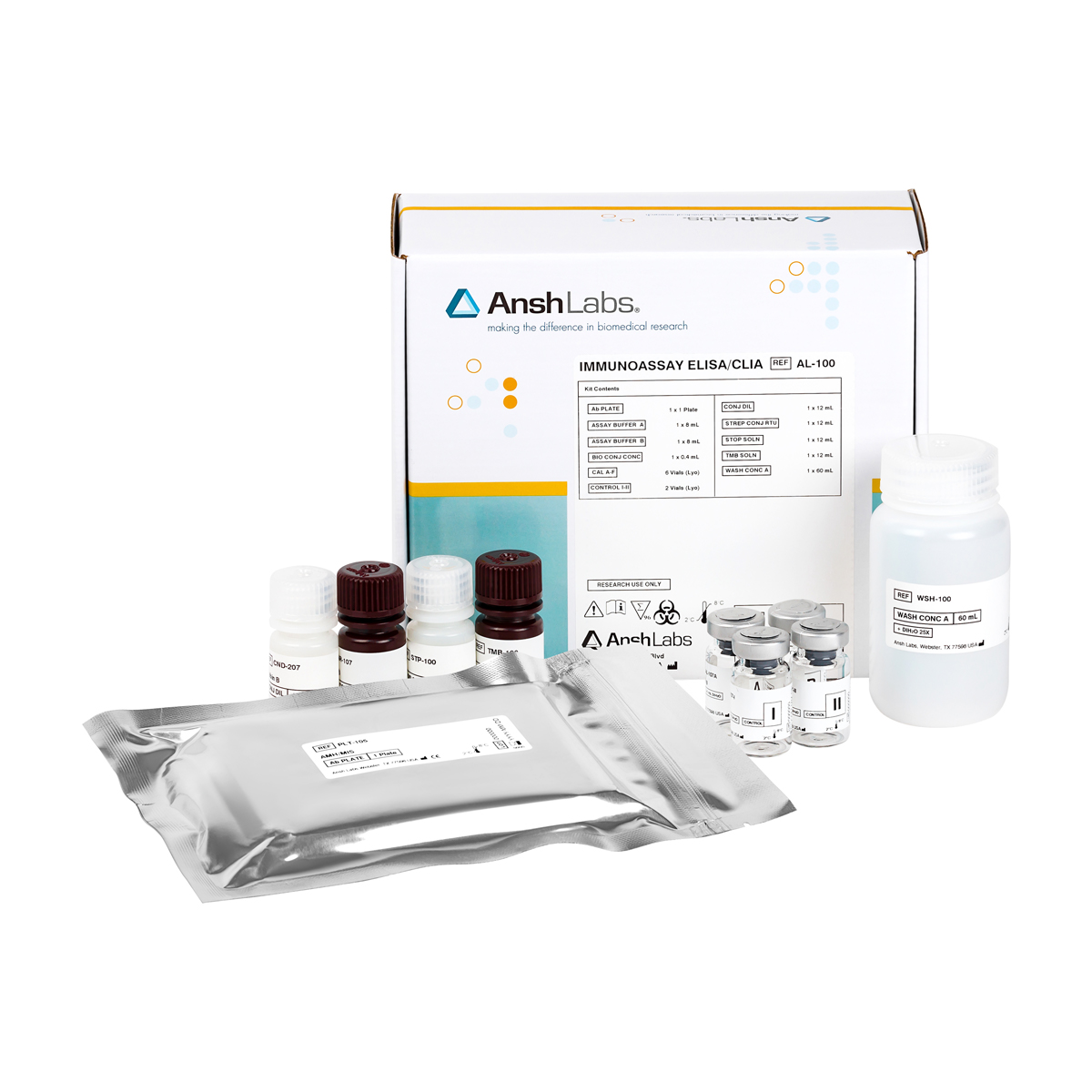The PAPP-A Stanniocalcin-2 Complex enzyme linked immunosorbent assay (ELISA) kit provides materials for the quantitative measurement of PAPP-A Stanniocalcin-2 Complex in human serum and other biological fluids.
| Catalog Number | |
|---|---|
| Regulatory Status | For Research Use Only. Not for use in diagnostic or therapeutic procedures. |
| Packaging | 96 well microtiter |
| Detection | HRP-based ELISA, colorimetric detection by dual wavelength absorbance at 450 nm and 630 nm as reference filter |
| Dynamic Range | 6, 0.77-50 ng/mL |
| Limit of Detection | 0.014 ng/mL |
| Sample Size | 25 µL |
| Sample Type | Serum |
| Assay Time | 3.5 hours |
| Species Reactivity | Human, Bovine Serum, Canine Serum, Canine Testicular Fluid, Caprine Serum, Ovine Serum |
| Shelf Life | 24 months |
| Availability | Worldwide |
Mammalian stanniocalcin-2 (STC2) is a secreted polypeptide widely expressed in developing and adult tissues. However, although transgenic expression in mice is known to cause severe dwarfism, and targeted deletion of STC2 causes increased postnatal growth, its precise biological role has remained unknown. STC2 potently inhibits the proteolytic activity of the growth promoting metalloproteinase, pregnancy associated plasma protein-A (PAPP-A). Proteolytic inhibition requires covalent binding of STC2 to PAPPA, and is mediated by a disulfide bond, which involves Cys120 of STC2. Binding of STC2 prevents PAPP-A cleavage of insulin-like growth factor binding protein (IGFBP)-4 and hence release within tissues of bioactive IGF, required for normal growth. Concordantly, STC2 efficiently inhibits PAPP-Amediated IGF receptor signaling in vitro, and that transgenic mice expressing a mutated variant of STC2, STC2(C120A), which is unable to inhibit PAPPA, grow like wild-type mice. STC2 is a novel proteinase inhibitor and a previously unrecognized extracellular component of the IGF system.1
REFERENCES
1. Malene R. Jepsen, Søren Kløverpris , Jakob H. Mikkelsen , Josefine H. Pedersen, Ernst-Martin Füchtbauer, Lisbeth S. Laursen, and Claus Oxvig JBC Papers in Press. Published on December 22, 2014 as Manuscript M114.611665.
